NFPA and ICC: How are they written and where and when are they enforceable?
In the 18th Century BC, the Babylonian king Hammurabi developed 282 laws to govern society. They included number 229, a pretty harsh (but kind of fair) building code: “If a builder builds a house for someone, and does not construct it properly, and the house which he built falls in and kills its owner, then that builder shall be put to death.”
We’ve thankfully come a long way since then, but modern codes (and standards) are incredibly complex and lengthy. And the punishment for violating these codes (mercifully, no death sentences)—depends on whether they are “model codes” or codes adopted by government entities as law.
Model codes form the basis of law and may be adopted in whole or in part, with modifications, by various state and local governments. And today’s two primary model-code-making organizations are the International Code Council (ICC) and National Fire Protection Association (NFPA).

A brief history of codes and standards
After frequent and large-loss fires in the early 1600s, Western cities made a major push to enact regulations for construction and building placement. These requirements continued to be written and added to, city by city, and vary widely. But in 1905, the National Board of Fire Underwriters, an insurance industry association in the United States, published the first national building code in the U.S.
A guide for the safe installation, use, and manufacturing of new technologies became necessary in the late 1800s, especially with the invention and application of fire sprinklers and developments in electricity. Out of this need, the National Fire Protection Association (NFPA) was formed in 1896—and the organization began issuing various documents that informed fire and life safety.
By the 1940s, U.S. building and fire code responsibilities were still divided into several distinct organizations that published regional documents, however, referred to as “legacy codes:”
- Building Officials and Code Administrators International (BOCA) published and enforced the National Building Code and the National Fire Code in the Northeast United States.
- The International Conference of Building Officials (ICBO) published the Uniform Building Code (UBC) in the Western United States.
- The Southern Building Code Congress International (SBCCI) published the Standard Building Code (SBC) and the Standard Fire Code in the Southern United States.
- The International Fire Code Institute (IFCI) and the Western Fire Chiefs Association (WFCA) created and published the Uniform Fire Code (UFC) which was adopted in 25 different states.
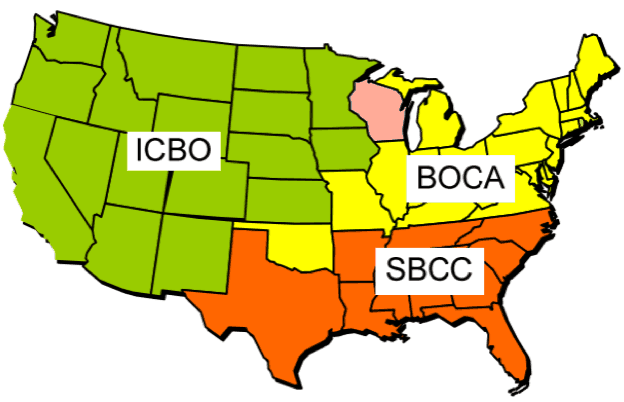
In 1994, BOCA, ICBO, and SBCCI consolidated to form the International Code Council (ICC). And the WFCA transferred publication of the Uniform Fire Code (UFC) to the National Fire Protection Association, which is now published as NFPA 1: Fire Code.
NFPA publications and “I-codes:” products of the two model-code organizations
The ICC publishes a family of codes referred to as the “I-codes”. There are 15 of these, but some of the primary codes that relate to construction and fire protection are:
- International Building Code (IBC)
- International Residential Code (IRC)
- International Fire Code (IFC)
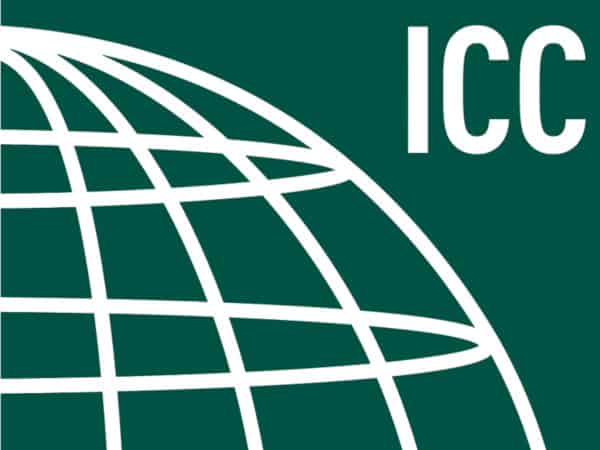
The purpose of the ICC is to provide “a wide range of building safety solutions including product evaluation, accreditation, certification, codification and training. It develops model codes and standards used worldwide to construct safe, sustainable, affordable and resilient structures.”
Their vision and mission: “Protect the health, safety and welfare of people by creating safe buildings and communities” while providing “the highest quality codes, standards, products and services for all concerned with the safety and performance of the built environment.”
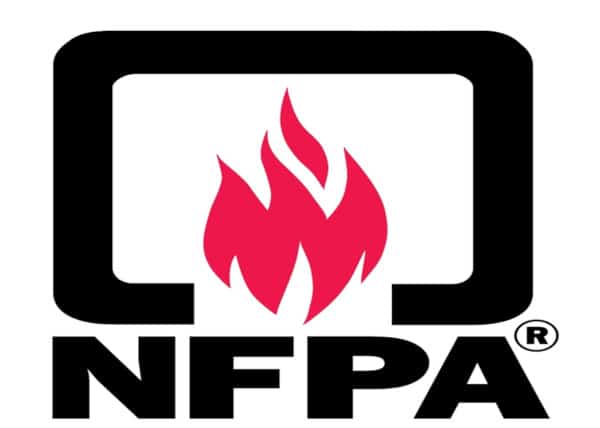
NFPA currently publishes more than 300 codes and standards, including:
- NFPA 1: Fire Code
- NFPA 101: Life Safety Code
- NFPA 5000: Building Construction and Safety Code
- NFPA 13: Standard for the Installation of Sprinkler Systems
- NFPA 25: Standard for the Inspection, Testing, and Maintenance of Water-Based Fire Protection Systems
NFPA’s mission is “devoted to eliminating death, injury, property and economic loss due to fire, electrical and related hazards.” This mission is accomplished “through more than 300 consensus codes and standards, research, training, education, outreach and advocacy; and by partnering with others who share an interest in furthering our mission.”
Both of these organizations are voluntary and consensus-based. This means that their implementation and enforcement are voluntarily adopted by states and local jurisdictions, and that their requirements are developed, written, published, and agreed upon by committees, with contributions, input, and acceptance from the users and the general public.
This consensus-based approach is somewhat unique to the United States. Many countries have a ministry or government entity that sets codes and standards requirements.
Code or standard: what’s the difference?
For model codes to be enforceable as law, they must be adopted through the legislative process by the state, county, city, or other jurisdiction. The jurisdiction can adopt the documents, all or in part, and can vary in which years, or editions, they choose to adopt.
A code is a legal document that governs certain activities—it tells the user what must be done. A standard tells the user how to do something, but it can also be enforceable if it is adopted individually or by reference; if a standard is referenced in the adopted code, then it is enforceable.
For example, NFPA 101: Life Safety Code or the International Fire Code (IFC)—and the government codes that have adopted versions of these model codes—may tell the user that an automatic fire sprinkler system is required. But these documents don’t offer specifics on how the system should be designed or installed. Instead, they reference a standard using language similar to this:
“Where required, the automatic fire sprinkler system shall be installed in accordance with NFPA 13, Standard for the Installation of Sprinkler Systems.”
At this point, a standard that is referenced in an adopted and enforceable code becomes law.
Other NFPA standards are commonly referenced throughout the IFC and the IBC, as well as the government codes that are based on them.
For example, fire extinguishers are required to be installed in all occupancies by both the IFC and NFPA 1. NFPA 10: Standard for Portable Fire Extinguishers outlines the selection, location, and care of fire extinguishers. Fire sprinkler systems are required to be maintained according to the provisions of NFPA 25: Standard for the Inspection, Testing, and Maintenance of Water-Based Fire Protection Systems. This document is referenced in NFPA 1, NFPA 101, and the IFC.
And all building and fire codes require electrical installations to meet the requirements of NFPA 70: National Electrical Code (NEC).
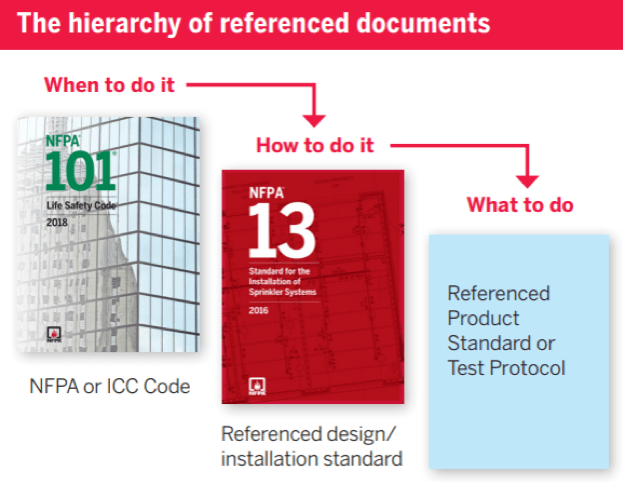
NFPA or ICC: who uses which codes?
The International Code Council’s International Building Code (IBC) is in use or adopted in all 50 states. The International Residential Code (IRC) is in use or adopted in 49 states (Wisconsin being the exception) and the International Fire Code (IFC) is in use or adopted in 41 states.
NFPA 1: Fire Code is adopted and enforceable in 19 states. Every state uses portions or an edition of NFPA 101: Life Safety Code, and it has been fully adopted by 43 states. In contrast, the NFPA’s competing document to the IBC—NFPA 5000: Building Construction and Safety Code—is only used by reference in 7 states.
Many of the NFPA’s standards are utilized and adopted by reference—either through references in adopted NFPA codes or adopted ICC codes. This may seem a little confusing, but it underscores the collaborative mission of these organizations and the fact that both are vital to the current building and fire codes in the United States.
When to use which code?
The IBC, the IRC, NFPA 1, the IFC—which code should be referenced, when? This depends on who is asking this question, and who it is being asked of.
Architects and engineers will reference all of these codes in assembling the design criteria for a structure. Other codes will be referenced based on who is holding the enforcing authority. A “building inspector” or “plans examiner” authority is defined by, and resides within, the confines of the adopted building code, such as the International Building Code (IBC). The building inspector does not have enforcing authority of the fire code, however. Where those sections are referenced, they must be examined and reviewed by a “fire inspector” or “fire plans examiner.”
The fire inspector will reference the International Fire Code (IFC), Fire Code (NFPA 1), and Life Safety Code (NFPA 101), as adopted by the jurisdiction. In contrast, a “residential inspector” or “residential plans examiner” can only enforce the provisions of the International Residential Code (IRC).
Know the enforceable codes and standards in your area
Codes and standards have evolved and developed over time—and continue to do so—to keep pace with emerging knowledge and technologies. They aren’t perfect and can seem difficult to follow but their requirements are based upon proven building and fire protection measures and the consensus of subject matter experts. They protect lives and property.
Since governments continue to adopt these documents as laws in various editions and modified versions, it’s important for stakeholders who must abide by the rules to understand which documents are in force in their jurisdictions.
You can learn which codes and standards are in play by checking out this resource from the ICC, as well as this interactive tool published by NFPA.
If you need fire protection equipment that will bring your building up to code, QRFS has it—or we can get it for you. Check out our selection of sprinkler system components and accessories (including commercial and residential sprinklers), installation tools, fire extinguishers, and so much more.
If you have questions or need something that you cannot find on the website, call +1 (888) 361-6662 or email support@qrfs.com.
This blog was originally posted at blog.qrfs.com. Check us out at Facebook.com/QuickResponseFireSupply or on Twitter @QuickResponseFS.


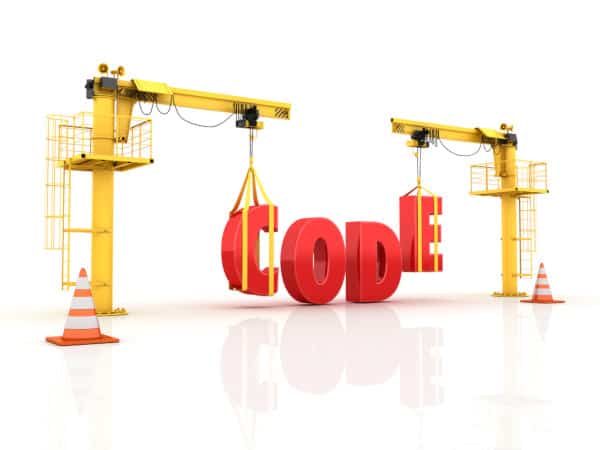
Re: #313 – ICC and NFPA Codes and Standards: A Basic Guide
The article is an excellent guide, well written and very useful. As a Certified Fire Plans Examiner and Facility Manager at a federal agency with a very low awareness and safety/facilities culture I could use publications like this for educational purpose. Are they available for use as educational materials?
Thanks, Tom Kerstetter
Hi Tom — We are working on getting materials together that can be purchased for such use. In the meantime, keep checking out the blog!
Wow, the same issue is happening at my federal facility. And mine’s responsible for public safety. But it seems to act as if it’s an internal discretionary program.
extremely informative and beneficial to engineers working in the construction industry
Angelina — Thanks for the kind feedback!
Is CFL-s1 a standard recognized in the US?
Sal — We aren’t certain if it carries explicit weight with a given item, as it’s a European classification. But many items meet multiple international standards. Here is a list that includes various US standards (primarily NFPA 701) and supporting standards (including ASTM E84-21).